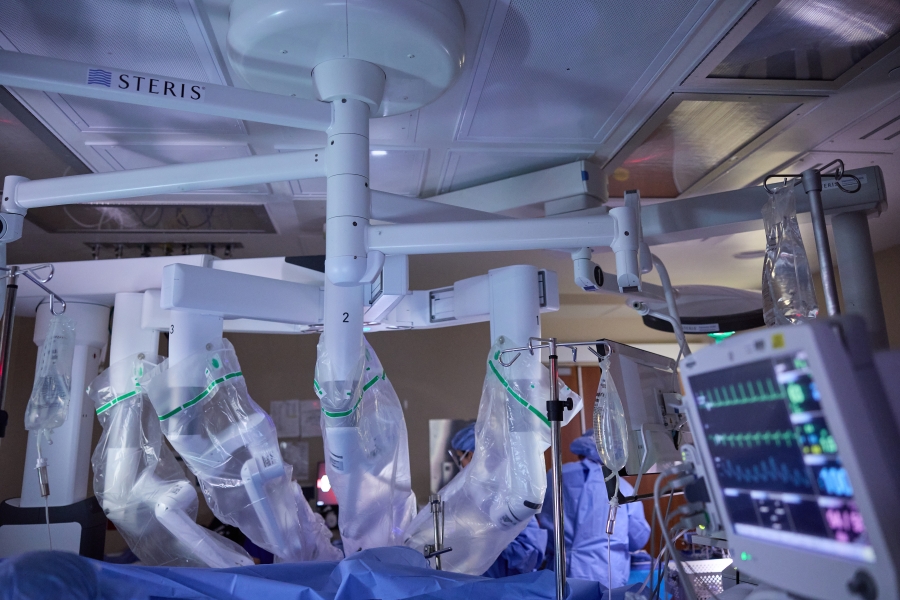Laughing, sneezing, coughing, even pulling into the driveway or washing dishes. For many people, these everyday activities have a common side effect: loss of bladder control, a condition known as urinary incontinence (UI).
UI affects millions of adults, both men and women. It most often impacts my patients over 50.
Many of my patients have had UI for a long time. They thought it was just something they had to silently endure. But I reassure them they don’t have to live with UI — it is treatable. There are many options available for controlling and even sometimes curing UI. The first step in treatment is to determine the type of UI present.
5 main types of urinary incontinence
Some of my patients with UI only leak a few drops of urine at a time. Others have more difficulty controlling their bladder and leak large quantities of urine. It depends on which of the following five types of UI they have:
1. Stress incontinence. Sudden pressure on the lower abdominal muscles can cause urine to leak. Laughing, coughing, lifting, and exercising are common triggers of stress incontinence.
2. Urge incontinence. The hallmark symptom of this type of UI is a strong and sudden need to urinate, and it often causes people to urinate before they can get to a toilet.
3. Overflow incontinence. This type of incontinence occurs when the bladder doesn’t empty — it gets too full — and small amounts of urine dribble out. You may feel like you can’t empty your bladder all the way, or you may strain when trying to urinate.
4. Functional incontinence. People who have functional incontinence may have normal urine control. However, they have trouble getting to the toilet in time.
5. Mixed incontinence. Mixed incontinence is a combination of urge and stress incontinence.
Common causes of incontinence
There’s no one main cause of urinary incontinence. It’s a complex issue, and every person is different. However, here are some of the main causes I see in my patients:
Bladder spasm. The sudden squeezing of the bladder can lead to involuntary urination. These spasms can be caused by kidney or bladder stones, some medications, stress, or too much caffeine.
Childbirth. Multiple vaginal births can increase the risk of incontinence later in life. Labor and delivery can damage nerves or muscles that control bladder function, leading to incontinence.
Diabetes. Drinking more liquid than usual and urinating excessively are early signs of diabetes. Undiagnosed or untreated diabetes can lead to loss of urinary control, especially during sleep. Diabetes that is uncontrolled for a long time can cause permanent bladder damage.
Diuretics. UI can be a side effect of some medications, foods, and drinks, which can cause the body to produce excessive urine. Caffeine is a diuretic, as are many drugs used to treat high blood pressure.
Enlarged prostate gland. This is a common cause of UI in my male patients. Often, it’s age-related — the prostate simply enlarges with age in most men. The prostate is located between the bladder and the urethra, so when the gland grows, it can obstruct urine flow and lead to incontinence from the bladder having to work hard to empty through it.
Menopause. The lack of estrogen after menopause may weaken vaginal tissue and the structures around it, including the urethra, that normally prevent urine from leaking.
Mobility problems. Conditions like arthritis, Parkinson’s disease, and multiple sclerosis can make it difficult to move quickly enough to reach a bathroom and remove necessary clothing before urinating.
Neurological diseases. Conditions such as multiple sclerosis, stroke, and spine diseases can impact the ability to control the muscles in urination. They can also decrease bladder sensation, so you aren’t always aware of the need to urinate. This decreased sensation is also common in people with dementia.
Neuropathy. This disease of the nerves is often linked to diabetes or alcoholism. Neuropathy can make the nerves that control urination less effective.
Urinary tract infection. An infection of the kidneys, ureters, bladder, or urethra can cause urinary symptoms, including incontinence. Once treated with antibiotics, these infections typically clear up, and incontinence symptoms disappear.
Diagnosing incontinence
You must get medical care if you have UI symptoms. Remember, you don’t have to live with bladder problems. A proper diagnosis will get you on your way to relief.
I start by asking my patients about their medical history and their symptoms. I also do a physical exam. Next, I may order one or more tests, such as an ultrasound or urine test. Other possible tests include
- A bladder stress test. With this test, you cough or bear down (as if pushing during childbirth) to see if you lose urine.
- Cystoscopy. A thin tube with a tiny camera is inserted into your urethra and bladder to look for damaged tissue.
- Urodynamics. A thin tube is inserted into your bladder, and then your bladder is filled with water. This measures the pressure in your bladder to see how much fluid it can hold.
I may also ask my patients to keep a diary for a few days to record how much fluid they drink when they urinate and how often and when they have leaks. All of this information will help determine what is causing their incontinence.
Incontinence treatment options
Fortunately, behavioral changes and medications help many regain bladder control. Among the treatments I recommend is
Bladder training. This helps manage UI. It involves learning how to lengthen the times between your trips to the bathroom, increase the amount of urine your bladder can hold, and improve your control over the urge to urinate.
Fluid intake modification. This plan changes the amount and types of fluid you drink. It often involves drinking fewer beverages like caffeinated or alcohol that trigger urination. It can also limit your intake of fluids two to three hours before bedtime to reduce nighttime incontinence.
Kegel exercises. These help strengthen the muscles that control your bladder. Both men and women can benefit from these exercises.
Pessary. This is a small rubber device that is inserted into the vagina. It is pushed up against the wall of the vagina and the urethra to support the pelvic floor muscles and help reduce stress incontinence and symptoms of pelvic organ prolapse.
Bulking agents. Injecting substances like collagen around the urethra can add volume to it. This helps keep the bladder opening closed. It also reduces the amount of urine that can leak out.
Get the urology care right for you
Some people limit their activities or avoid socializing because of bladder control problems. At the Fox Chase-Temple Urologic Institute, we aim to find and address the causes of urinary incontinence so people can live their lives to the fullest. Our urologists have extensive experience with genitourinary conditions and can provide a personalized treatment plan.
If you are dealing with urinary incontinence, we can help. Schedule an appointment with a Fox Chase-Temple Health urologist or call 800-TEMPLE-MED (800-836-7536).

